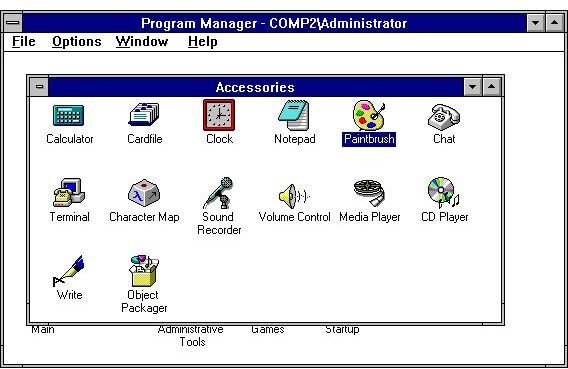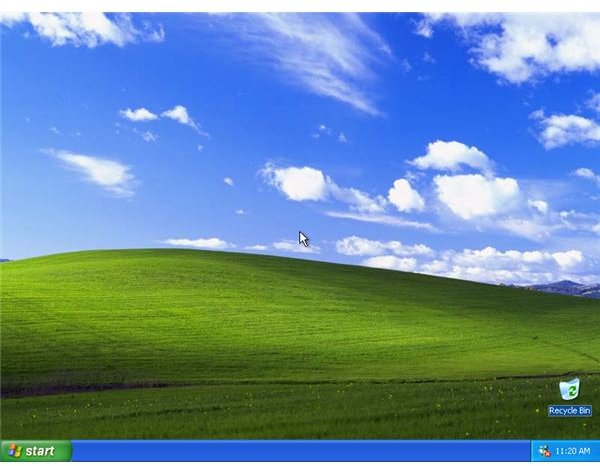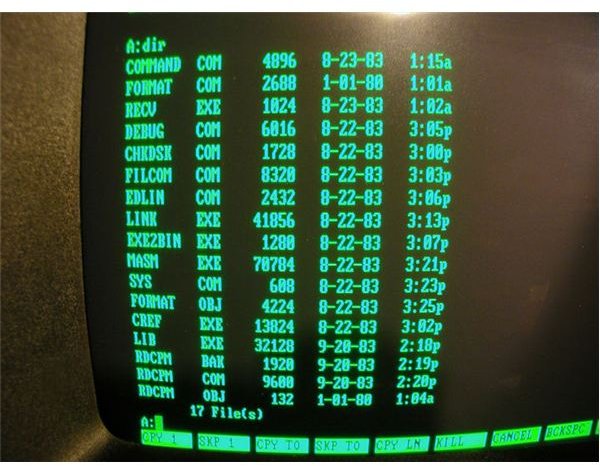The History of Microsoft Company
How Microsoft Came into Being: The History of Microsoft Company
The history of Microsoft is interesting. It starts with two friends who were computer addicts. Bill Gates and Paul Allen were programming enthusiasts and close friends. The history of Microsoft says the initial idea to own a software entity was conceived of by Allens who then contacted Gates. Together they started with a small firm that initially created small applications for local clients.
When studying BASIC, a simple programming language that taught programming to students, Gates realized the potential of the language to run on the kind of computers at that time (with very low memory and slow processors). This was around 1975 when the MITS Altair was released. Both Gates and Allen worked hard on BASIC to make it compatible with MITS Altair, and they were not only successful but also were able to sell the product to MITS, which gladly accepted the software for use on the Altair.
Thus, it was Altair BASIC (and its pirated versions) that gave the much required boost to the combined venture of Allen and Gates. As the sales (both domestic and international) rocketed for Altair Basic, their then unnamed firm was registered under the name of Micro-soft in 1976 (with the hyphen) in New Mexico.
Note: Micro-soft was initially a partnership agreement until 1977 whereafter it was re-registered as a company under the name Microsoft Corporation. Gates was the President while Allen was appointed Vice President of the company. Allen later left the post of VP but still sits on the Board of Directors.
The above just the history of Microsoft in making. The next section takes a look at how Micro-soft captured almost all the major PC manufacturers.
Capturing the Worldwide PC Market and the Role of MS DOS
Although the Altair BASIC was a stepping stone for Micro-soft, Gates went ahead to add several enhancements to the product and registered it with his own firm. The MS BASIC was much easier compared to Altair BASIC, and, very soon, it was recognized by companies such as GE, CitiBank, and many others who started using MS BASIC instead of Altair Basic. MS BASIC is still used to educate people who are new to programming. Besides BASIC, Micro-soft created FORTRAN and COBOL, two more high level programming languages that are still used for mathematical applications.
By the time FORTRAN and BASIC were being used by several institutions, plenty of PC manufacturers entered the microcomputer market with development in IC technology. Among them was Apple, now a competitor of Microsoft (MS). Apple also sold over a million computers that carried MS BASIC. As different machines had different configurations, Micro-soft created an Assembler that offered greater control over programming.
With the ever increasing demand, Microsoft Corporation opened its first international office at Japan in the year 1978. The Japanese office was under collaboration with the ASCII Corporation of Japan that took care of sales while the New Mexico office was primarily used to create and enhance further software.
The company shot high when it released its second operating system, MS DOS. The first was based on UNIX and was called Xenix. However, there were not many takers for the Xenix OS. Later Microsoft disassociated itself with UNIX and came up with MS DOS (Disk Operating System). The name was attributed to the three and half inch floppy disks that could contain the entire operating system. Most PCs carried 16 bit processors by 1980. MS DOS was a command line interface that required only five files to boot and carry out basic file operations on any computer. Besides, the company created several other commands (small applications) for more sophisticated tasks such as UNDELETE to retrieve deleted data. All these commands were an extension to MS DOS.
The potential of MS DOS was soon recognized by IBM, one of the leading PC manufacturers who awarded a contract to Microsoft for using MS DOS on all its machines. This bought about a major change in the history of computing as well as the history of Microsoft. In the early 1980s, Microsoft had its own version of home PCs carrying MSX DOS, where MSX was the name of PC developed by MS. Very soon, the operating system captured almost all major computer vendors who started shipping their machines with DOS preloaded on the system.
By the end of 1982, Microsoft was again renamed to Microsoft, Inc, operating from Washington with over 220 employees worldwide. It captured a major chunk of the international market with over fifty PC vendors marketing its products, mainly the MS DOS and several programming languages. As the general public was still considering Microsoft as the BASIC software and operating system designer, Gates had other plans that would revolutionize the way people used computers.
The next page details the plan that not only changed the computing scenario forever and for everyone but also rewrote the history of Microsoft, spiraling it above the world’s leading software companies!
Introducing the GUI and the Dawn of Microsoft Windows
At the end of 1983, Microsoft products were aplenty and in use worldwide on different PCs. These included the GW Basic (extension to MS BASIC for complex programming), C Language, MS Flight Simulator (created for IBM), Pascal (another high level language), and a spreadsheet named Multiplan. The only competitor to Multiplan was Lotus, which gained an upper hand initially but had to give in to the Multiplan owing to the strong presence of Microsoft all over the world.
All the while, Gates was thinking of creating a word processing program that would take over WordPerfect. The year 1983 was a major turning point in the history of Microsoft. The semi-GUI (graphical user interface) based word processing program MS Word for MS DOS 1.0 was released in September. As part of its marketing strategy, Microsoft gave away a demonstration floppy with the September 1983 issue of PC World. The same year, in May, Microsoft came out with the concept of mouse so that users could quickly position their cursors on the screen.

Finally, in the month of November 1983, Microsoft unveiled a graphical user interface based extension to DOS. This software is what we know as MS Windows today. The Windows version 1 not only had a GUI that could easily be used with the available input devices (Remember that Microsoft came out with mouse sooner than Windows) but also offered the capability of multi-tasking. The term multi-tasking refers to the process of switching from one program to another without closing either of them. This was highly appreciated by users across the world and very soon captured a significant portion of the computing industry.
At the same time, Microsoft was also working on MS Works. The bundle of MS Works contained a word processor, a spreadsheet, database, and some other applications related to office jobs. MS Works was originally created for Apple. This was replaced by MS Office in 1989, which contained most of the applications such as MS Word, MS Excel, and other applications.
Meanwhile, MS was also working on OS/2, another operating system for IBM, which too proved to be a success. The partnership continued till 1990—the time when Windows version 3 was being used on more than eighty percent of PCs worldwide. With the end of partnership with IBM on OS/2, several of its features were transferred to Windows and a new release came as Windows 3.1 that continued to impress users across the world. At the turn of 1994, Microsoft had many products that gained much popularity across the world, the major ones being MS Windows 3.1, MS Office, Windows NT, SQL Server; and a knowledgebase apart from Visual Basic for Windows programming!
Until version 3.1, Windows was dependant on DOS meaning people had to boot into DOS for loading Windows. After leaving out OS/2, Microsoft directed most of its resources to MS Windows to make the operating system what it is today.
The following final section deals with the history of Microsoft after Windows 3.1, which made Microsoft the most prominent software company in the world and which led rise to several rivals who once used its products. The rivals list includes Apple that used Applesoft BASIC as well as MS Works.
The History of Microsoft: Still in the Making
Microsoft took a giant step when it released its next operating system, Windows 95, which had a unique and easy to operate GUI (especially the Start Menu). Although the look was entirely different from Windows 3, it sold more than four million copies in the initial two days of its release! Taking the micro-computing world by storm, MS continued its efforts to bring out the best by regular upgrading the Windows operating system that saw major changes with Windows 98, Windows 2000, and Windows XP.
Internet Explorer was integrated into the operating system from Windows 95 itself. The browser was actually a product of Spyglass that filed a case against the company saying that it was to receive a royalty for each copy sold. However, Internet Explorer was never sold separately. It was instead part of operating system (OS), and Spyglass lost the claim. Ever since, there have been several lawsuits against Microsoft for creating a monopoly in the computing segment, objecting especially to the browser and Media Player that are bundled with the OS.
The Media Player was taken off the copies sold to Europe and the same is to happen with Internet Explorer when Windows 7 is released later this year.

Windows XP was released in 2001, another major change since Windows 95 and stays even as Microsoft developed Vista and is about to release Windows 7. While Vista did not appeal to users, trends say that XP will still stay for a considerable time before people move on to Windows 7 even though the seventh version is scheduled to be released in October 2009.
The main strategy of Microsoft has been to move a step ahead of technology. This strategy of MS helped it to design Windows Mobile for use with cell phones and Windows CE for handheld computers among software for many other latest innovations. Another strategy of Microsoft is allowing its users to communicate directly with its Public Relations people through its website, which helped MS gain a huge loyal customer base that is bound to stay for a long time.
The history of Microsoft has seen several ups and downs, with many rivals and anti-MS elements rising against it on one side and with many more followers of MS who go for Brand Microsoft just because it is Microsoft. More details on the current product line, knowledgebase, and other updates (news) can be obtained from the Microsoft website, which offers more accessibility than any of its competitors.
